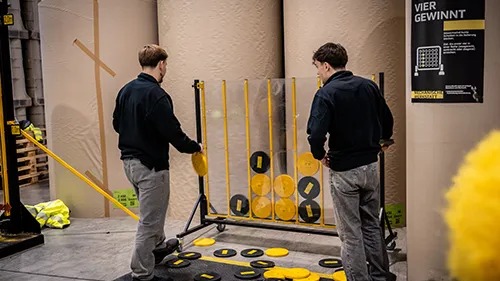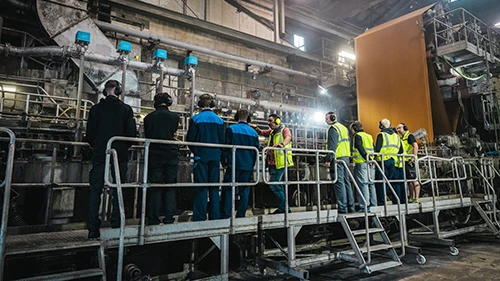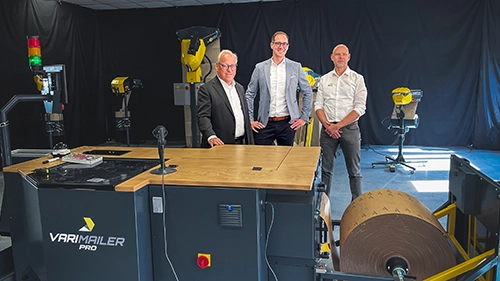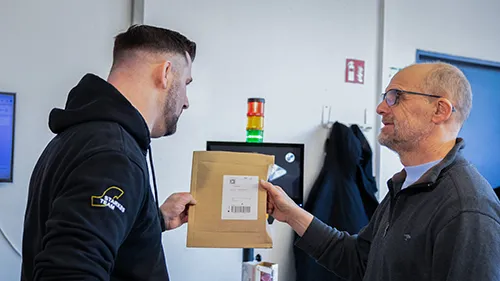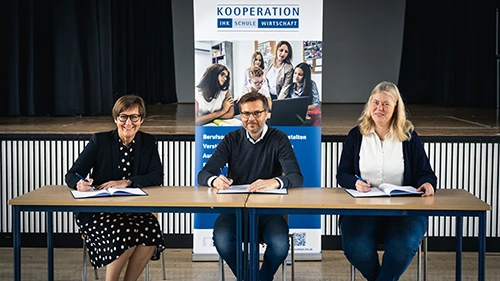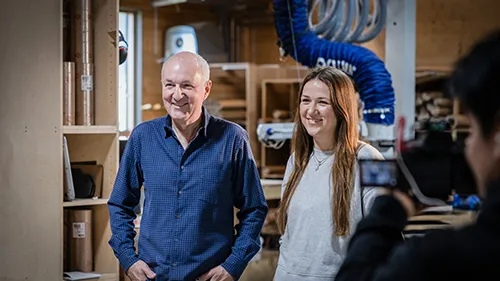Many years ago, our employee Marco Adämmer registered with DKMS as part of a typing campaign organised by his football club. There was a personal reason for this: the father of two team-mates had contracted leukaemia and died.
Recently, over 10 years later, he received an email from DKMS informing him that he might be a potential donor. In an interview, he tells us about his journey to becoming a stem cell donor for a woman in the USA. Together with Papier Sprick, he wants to motivate his colleagues to register.
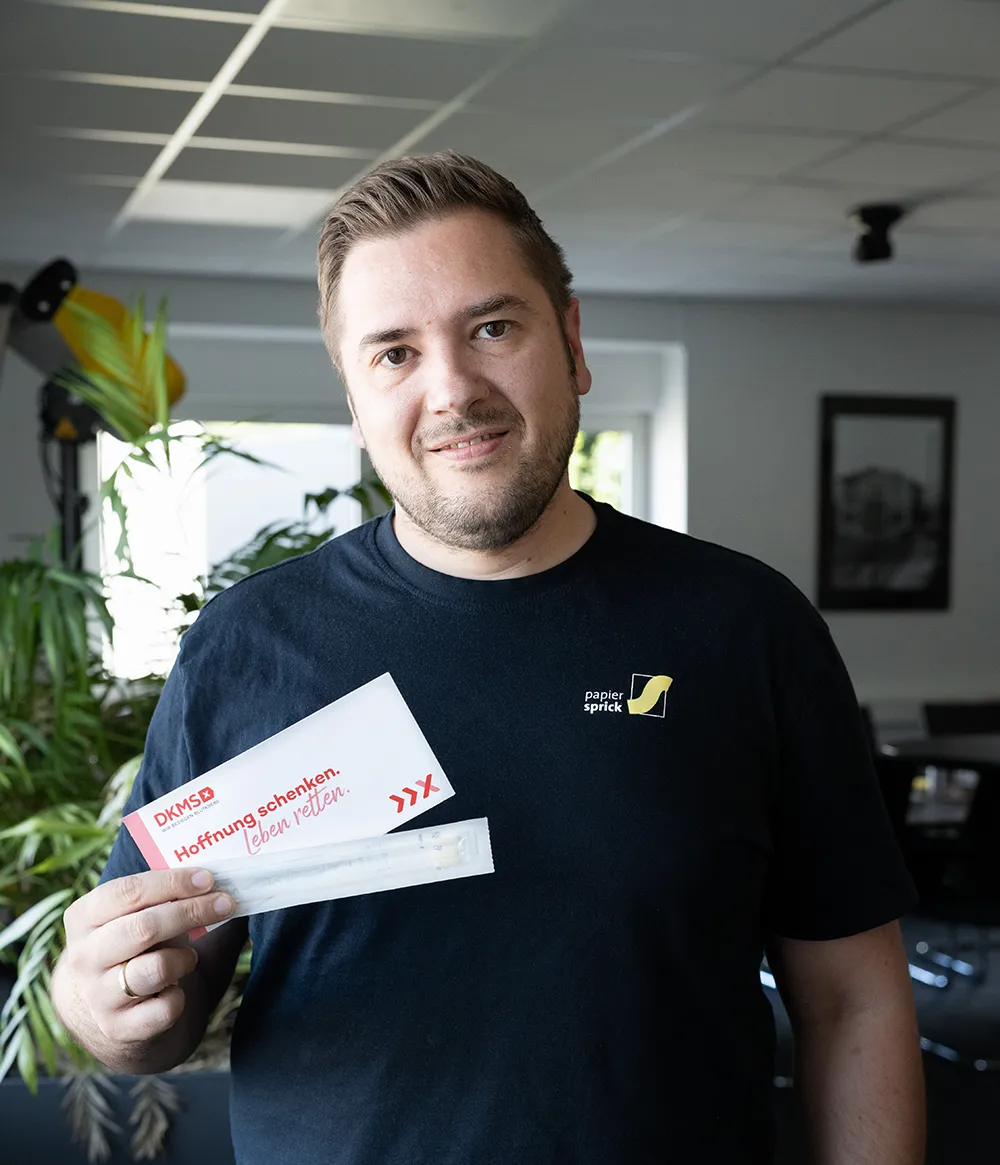
Papier Sprick supports with donation
It was a matter of course for Marco to become a donor, which we find impressive and worthy of imitation! It can affect anyone in any age group and there is no other way out than a stem cell donation. Marco says: ‘For what you’ve done as a donor, the cost is a small price to pay.’
All costs for travelling, hotel accommodation, meals and the days off work at Papier Sprick – as well as those of his wife, who looked after the child at home on the day of the donation – are borne entirely by DKMS. The organisation is therefore very dependent on donations. For this reason, Papier Sprick is waiving the costs incurred by the leave of absence and would like to donate the money instead.
At the same time, it is a call to every employee in the company to register. Papier Sprick is promoting this and, in addition to some information material, has also organised registration kits, the costs of which are covered by the company.
You can also register yourself and your families privately. At https://www.dkms.org.uk/get-involved/become-a-donor you can request a registration kit free of charge. Since the coronavirus pandemic, everyone knows how to use a swab for a smear test.
If you are already registered, it is important that your details are up to date so that DKMS can contact you. You can update this data here: https://www.dkms.org.uk/update-your-details.
The path to donation
‘The contact from DKMS came unexpectedly,’ says Marco. ‘So much time had passed since I registered.’ However, he called back and confirmed his willingness to donate stem cells. There was no question about his commitment. As only DNA strands are stored during the first registration and therefore only a relatively rough comparison is possible, he was sent a blood collection kit. He took this to his GP (this can also be done privately if the person has the necessary knowledge) and sent in the blood samples to be analysed.
A health enquiry was made by telephone in order to rule out any risks for the recipient as well as for himself. He was informed about the further procedure, had the opportunity to ask questions and was given a fixed contact person to whom he could turn at any time. At any point in the process, he could have changed his mind and cancelled the donation.
The best medical advice and care
Three to four weeks before the donation, things became more concrete and he travelled to the clinic in Cologne for an extensive preliminary examination including a large blood sample, physical examination and ultrasound scan. This was the closest location to him, which carries out stem cell donations for DKMS.
Many people may have a major operation in mind when it comes to stem cell collection. However, bone marrow collection under general anaesthetic is only performed in 10% of cases. (Source: https://www.dkms.org.uk/donation-explained/stem-cell-donation/bone-marrow-donation) The apheresis procedure, which was also used for Marco, is much more common. (Source: https://www.dkms.org.uk/donation-explained/stem-cell-donation/peripheral-blood-stem-cell-collection) Doctors insert an access line into both arm veins. The blood taken from one arm is then returned directly to the body via the other arm, but without the stem cells and nutrients it previously contained. To stimulate the production of stem cells, Marco took a drug five days earlier. This can lead to symptoms similar to those of flu, but these disappear after the donation.
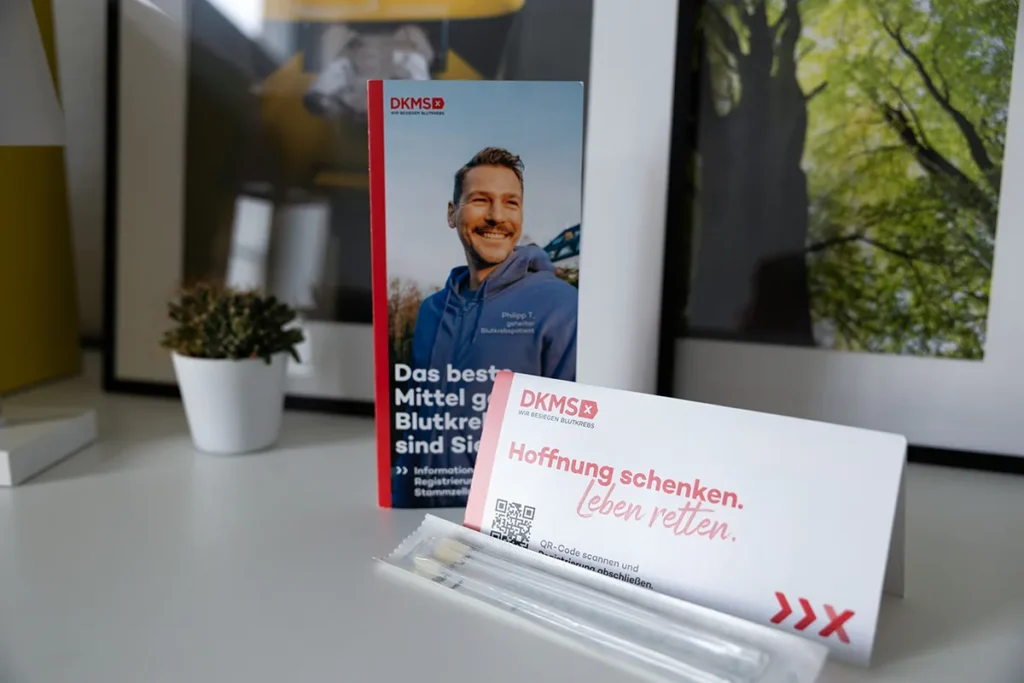
The day of the donation
At the beginning of June, the time had come for the donation. Marco travelled there the day before: ‘I didn’t want to stress myself out and arrive at the clinic the next morning feeling relaxed.’ A final blood test was then carried out on site to see how many stem cells had been enriched by the medication. This determines how large the donation needs to be and how long Marco has to remain connected to the apheresis unit. The patient had a very high demand for stem cells. Fortunately, our colleague had produced a lot of them – ‘the highest amount ever made by a donor in this clinic,’ he says proudly. He was even finished after just two hours!
In the meantime, he was able to watch films and was provided with food. “You are still very restricted by the access points. You can’t move the arm from which the blood is taken at all and you can only move the other one a little,” Marco explains. He then spent some time in the day room under medical observation and was given nutrients before returning to the hotel to recover. The next day he was back on his feet and ready to go home.
What happens next?
All Marco knows about the recipient of his stem cell donation is that she is a woman over 30 in the USA. This will remain the case for the time being, as only anonymous contact is possible for the two years following the donation. After that, he can apply for personal contact. Whether he or the patient wants this remains to be seen. Nevertheless, DKMS will keep him regularly informed about the recipient’s state of health for a certain period of time. If another donation is required, Marco will remain ‘reserved’ for her for a year, meaning he will not be allowed to donate stem cells to anyone else. He is also not allowed to make regular blood donations until the end of the year.
His stem cell donation has had no other effects or side effects for him. At the same time, it has had a huge impact: he has saved a life. And hopefully inspires many others to do the same and register with DKMS.


